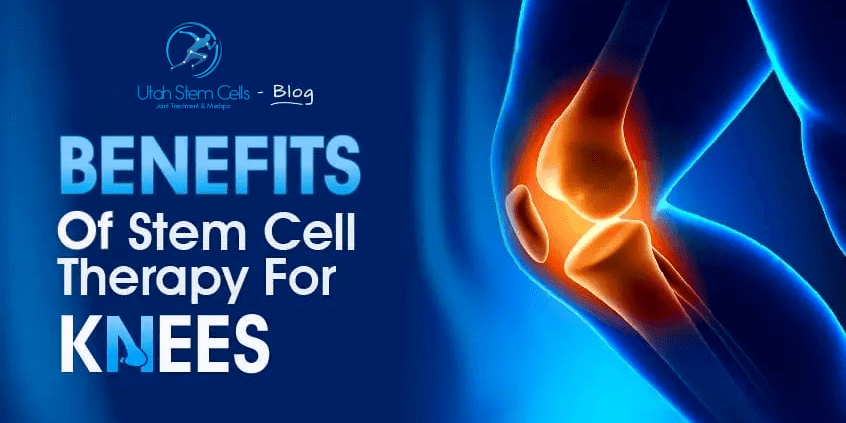Benefits Of Stem Cell Therapy for knees is a treatment approach that can help to reduce the amount of irritation and joint inflammation a patient can experience on a daily basis, and in the long-term, it works to postpone or even prevent more serious medical procedures such as knee replacement, for example. Just how long ongoing stem cell therapy lasts for varies on a patient by patient basis, but typically, once the suggested protocol is finished, the results are permanent.
Most patients seek out knee treatments in order to reduce the amount of pain they experience from ligament or nerve damage they experienced, and ideally, want to avoid surgical procedures if at all possible. Stem cell therapy for knees is a bit more complex than some other parts of the body as the blood supply is more constrained within this region, but if it’s done in just the right way, then the results can be very positive.
What to be aware of for Stem cell therapy for knees
Joint ligaments work together in order to protect bones from rubbing together and to encourage the smooth development of the joint surfaces. The impact felt within the knees can be a whopping 20x that of a patient’s actual body weight, so it’s important that stem cell therapy for this particular body part takes this into account – especially for patients who are physically active and involved in sports.
A common chronic degenerative condition is Osteoarthritis, and what happens is joint ligaments essentially break down over time within the knee area. This can be caused for a variety of reasons including some form of knee damage occurring, tendon issues cropping up, or the popping or cracking of joints. Once a joint begins to become unstable, this can wear out the articular ligament and affect bone material, tendons, muscles, and other ligaments. One issue can lead to others and it creates a downward spiral that can be hard to resolve without proper care and an effective treatment plan in place.
Stem cell therapy for knees is negligibly intrusive and it aims to diminish the amount of aggravation inflicted, decelerate and fix harmful joint inflammation issues, arthritis, and works to keep patients free from having to undergo surgery and to endure a lengthy and challenging rehab process.
How does Stem Cell therapy for knees help?
Stem cell treatment is gaining traction on a global scale, and numerous treatments by centers are being offered to combat ailments such as sclerosis knee problems and chemical imbalances, in an effort to restore normalcy to patient’s bodies and lives. Some stem cell therapies are being developed without a ton of scientific proof that they will work, in an effort to advance the methodology, and to ultimately benefit millions of patients over time. Researchers and doctors are encouraged by the results they are seeing in new and advanced stem cell therapy studies, and this is literally evolving health sciences right before our eyes.
Injections for Stem Cell
Stem cells can be derived from several sources, like bone marrow or fat through medical extraction processes, and then concentrated and injected right into a patient’s knee using image direction technology for optimized results. Our preferred source is Umbilical Cord, which is easier on the patient, and offers optimal numbers of live, healthy and mesenchymal stem cells.
Interestingly enough, a case study showed that both knees can be improved in patients by injecting just one knee. There’s a lot we have to learn about stem cells as they relate to treatment options, and with increased experimentation and carefully tracked progress, we will see new advancements and improved results over time.
Specialists in this field conclude that stem cell therapy for the knee works by:
- Forming important ligament cells, and giving nerves and tendons growth factors
- Minimizing the inflammation
- Discharging proteins known as cytokines that moderate degeneration of cartilage and decrease pain.
Ongoing research has a goal to determine the optimal and most reliable outcomes for stem cell knee therapy based on using proven techniques, ideal dosage amounts, and correct cell choices. Prolotherapy has shown tremendous success for joint regeneration, even when sugar water was applied.
Side effects or reactions
Side effects are negligible for stem cell treatment for knees, and treatment is also not particularly painful and is noninvasive. The injection site itself can have a mild amount of temporary discomfort, and some swelling or stiffness of the joints has also been reported by patients.
Safety measures of stem cell therapy for knees
Stem cell treatment on various body parts other than knees can pose health risks but noting compared to traditional surgery, but for the knees specifically, any risks or potential dangers are quite minimal.
In order to prevent a patient’s body responding in a negative way, stem cell treatment is best done by using a patient’s own cells and then allocated where needed within the body.
Knee pain that has existed for a long time due to degenerative or damaged joints may benefit greatly from regenerative medical treatment. Damage to a knee’s ACL or MCL is often treated using regenerative techniques as a non-surgical option. Surgery on a knee can often require a long-term rehab and restoration process, but regenerative treatment in the form of stem cell therapy has been proven to be effective and offers beneficial value as opposed to opting for surgery.








